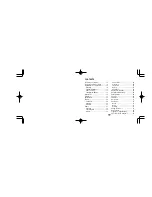
3-1-9
Accessing the NJ-series Controller Communication Areas using
Variables
With an NJ-series, accessing the I/O memory allocated to each communication area can be done with
the user program with the use of variables.
Here is an example of using the MXL/SLC Input Assembly (102) and Output Assembly (197) for that
purpose.
For more detailed information about the data structure of each Assembly, please refer to
A-2 EtherNet/IP Detailed Specifications
Access
u
sing Network Variables
Create user-defined variables that match the structures of the communications areas of the Sensor.
Use the Sysmac Studio to define the variables.
For how to use Sysmac Studio, please refer to
Sysmac Studio Version1 Operation Manual
(
W504
)
.
1
Defining the Data Types of the Variables
Define data types for variables that match the structures of the communications areas.
(1) Defining a Data Type for Control Signal Access
First, define a BOOL array data type to access the control signals and status signals.
Here, we define the Data types,
COMMAND
and
Device_Status
.
Control Signal
Data Name
Data Type
COMMAND
ARRAY[0..31]OF BOOL
Run_Mode
BOOL
Trigger
BOOL
Enable_
Matchcode
BOOL
…
Output_2
BOOL
Output_3
BOOL
Reserved
ARRAY[0..17]OF BOOL
Status Signals
Data Name
Data Type
Device_Status
ARRAY[0..31]OF BOOL
Online
BOOL
Trigger_Acknowledged
BOOL
Exposure_Done
BOOL
…
Output2_Status
BOOL
Output3_Status
BOOL
Reserved
ARRAY[0..10]OF BOOL
(2) Defining Data Types for Communications Area Access
Data types are defined according to the communication area to access, with one data type
for Output Area and another data type for Input Area.
Here, there are two Data types defined,
S_EIPOutput197
and
S_EIPInput102
.
3 Controlling Operation and Data Output with Ethernet
3 - 15
V430-F Series Autofocus Multicode Reader User Manual for Communication Settings
3-1 Controlling Operation and Data Output with Ether-
Net/IP
3
3-1-9
Accessing the NJ-series Controller Communication Areas using V
ariables
















































